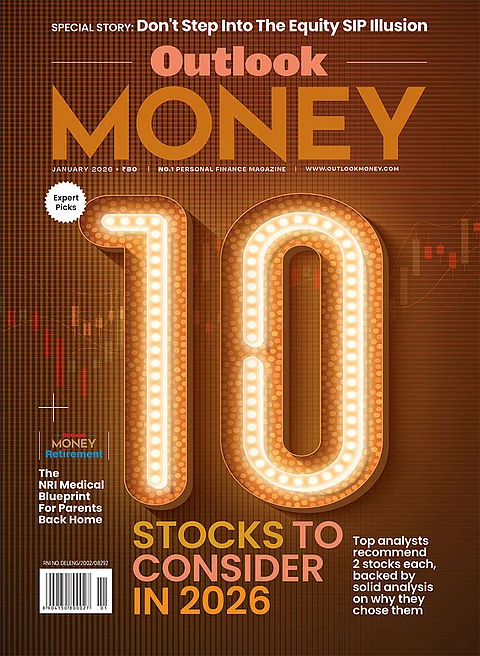The Finance Act, 2023, has taken away the indexation benefit from debt mutual funds. It states that the gains from the growth option of funds with equity allocation of less than 35 per cent will be taxed as short-term capital gains (STCG), irrespective of the holding period.
STCG from non-equity funds are taxable at the marginal slab rate. At the highest tax bracket, it is 30 per cent plus surcharge and cess. It effectively means that the indexation benefit, which was there for a holding period of three years, is not available anymore.
The taxation of equity funds remains the same as before. Gains from equity funds held for more than a year in the growth option will be taken as long-term capital gain (LTCG), and will be taxed at 10 per cent plus surcharge and cess. On a holding period of less than one year, equity funds are taxable at 15 per cent plus surcharge and cess.
The changes in mutual fund taxation through the Finance Act 2023, has opened up a third category of funds for taxation purpose. At present, the two existing categories for taxation are equity and debt. Now, we have to distinguish between what we understand as debt funds and what has been stated in the Finance Act, 2023. The Act talks about funds with less than 35 per cent allocation to domestic equity. Hence, it includes debt funds, gold funds, international equity, or, for that matter, any fund with equity allocation less than 35 per cent.
Another aspect to note is that it is not mentioned anywhere that indexation benefit has been removed. It states that gains from funds with equity allocation less than 35 per cent will be taxed as STCG, irrespective of the holding period.
New Taxation Category
The new category for taxation purpose comprises funds with equity allocation between 35 and 65 per cent of the portfolio. Funds with more than 65 per cent exposure to domestic equity are taxable as equity funds, and those with less than 35 per cent exposure qualify as debt funds.
In the mid-bracket, the taxation is taken as it is for non-equity, as the allocation to equity is less than 65 per cent. But as indexation is still available, they get its benefit.
How Does Indexation Work?
So, how does indexation work? You have to invest in the growth option of the fund and remain invested for at least three years. There is a cost inflation index (CII) announced by the tax authorities every year. When you finally redeem your fund with the asset management company (AMC), which is a sale for tax purposes, the gains become taxable. Also, your purchase cost gets “indexed up” with reference to the CII of the year of sale divided by the CII of the year of purchase.
Let us see this with an example. A debt fund investment made up to March 31, 2023, is eligible for indexation, whenever you redeem.
Let us say you invested in a fund in March 2020, during the new fund offering (NFO) with net asset value (NAV) of Rs 10. You redeemed the fund in July 2023, which means a holding period of more than three years, at a NAV of Rs 13. The CII for your investment year (2019-20) was 289 and for redemption year (2023-24), it has been announced as 348.
Hence, your purchase cost of Rs 10 gets indexed up to 348/289 X Rs 10 = Rs 12.04. The taxable component of your gain, subsequent to indexation, is Rs 13 minus Rs 12.04 = Rs 0.96.
Taking the taxation rate at 20 per cent, and ignoring the surcharge and cess for simplicity, the amount of tax comes to Rs 0.19. Effectively, the tax incidence of 19 paise on a gain of Rs 3 over the investment period is on the lower side. It is 6.4 per cent in our example.
Eligible Funds
Now the big question is, which funds fall under this mid-bracket, and are eligible for indexation? The most likely candidates, as you would have guessed, are hybrid funds.
By definition, debt funds cannot have as much equity, and equity funds by definition have more than 65 per cent equity. However, in hybrid funds also, it is not possible to run any and every fund with equity allocation in the range of 35-65 per cent. The Securities and Exchange Board of India (Sebi) categorisation rules provide the contours for all fund categories.
At present, few AMCs have positioned their multi-asset funds (MAF) in this bracket of 35-65 per cent allocation to domestic equity. Sebi’s definition of MAF says allocation to at least three asset classes (for example, equity, debt, gold or any other), and allocation of at least 10 per cent in each asset class. Hence, the AMCs have the flexibility to define the extent of allocation to equity.
However, before you invest in an MAF, check with the AMC for indexation benefit on it.
For example, if the AMC runs 70 per cent in equity, it is an equity fund for tax purposes and not eligible for the indexation.
Limitation Of funds
There are six hybrid fund categories, of which one is MAF. Certain hybrid categories are bound by Sebi regulations and cannot be positioned in the bracket of 35-65 per cent in equity.
Conservative hybrid funds invest a maximum of 25 per cent in equity. In aggressive hybrid funds, arbitrage funds and equity savings funds, the minimum allocation to equity is 65 per cent. That leaves aside only balanced advantage funds (BAF), which are usually run as equity funds. Repositioning of BAF for indexation benefit is technically possible, but an AMC will do it only if the majority of investors prefer it. From the taxation perspective, investors prefer equity taxation. The reason is that tax efficiency is available after one year of holding (10 per cent vis-à-vis your marginal slab rate), against three years required for indexation benefit.
Conclusion
For your debt fund investments, it is advisable to execute fresh investments in a new folio. This will avoid confusion with your investments in debt funds done till March 31, 2023. Taxation works on a first-in-first-out basis, so a new folio for fresh debt fund investments will demark between the old and new deployment.
Tax efficiency over a holding period of more than three years depends on the extent of indexation, which is done with reference to cost inflation index. History shows that in most years, indexation leads to a tax incidence of less than 10 per cent of the gains, which is beneficial for you.
For your non-equity fund investments, if you have a horizon of more than three years and prefer to avail of indexation, you may consider eligible MAFs.
However, remember that taxation is only one criterion for the decision, your fund allocation should be based on your needs and suitability.
By Joydeep Sen, Corporate Trainer and Author







